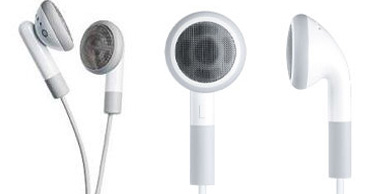
For years, consumer and health advocates have warned about the dangers of pumping loud music into our heads using personal music players like iPods and cell phones: health and safety experts have long warned that most music players can put out music volumes that, over time, can lead to long term hearing loss—especially for folks who insist on tapping into their tunes for hours at a time. Now the European Union is doing something about it, revising its safety requirements for personal music players to reduce the risk of hearing damage from prolonged use: by default, music players will be limited to a maximum volume setting of 80 db—about the volume of nearby road noise or someone shouting—and manufacturers will have two years to come up with solutions.
“It can take years for the hearing damage to show, and then it is simply too late,” said the head of the EC’s consumer protection group Meglena Kuneva, in a statement. “These standards make small technical changes to players so that by default, normal use is safe.”
Players will still be able to push volume levels higher than 80db, but must provide a label or onscreen warning about the risks of higher volume levels on hearing. Manufacturers are currently required to provide a warning in the documentation for their products—but who reads manuals?
the 80db threshold is generally considered safe for prolonged exposure of up to 40 hours a week. However, even seemingly-slight increases in volume significantly reduce the amount of time users can be exposed before running a risk of hearing damage: for instance, safety experts recommend road workers be issues hearing protection for prolonged exposure at 85db; at 89db, the maximum safe exposure per week is five hours.
Many personal music players can output effective volume levels in excess of 100 to 110 db; 120 db is generally considered the “threshold of pain” and is about as loud as a jet engine. Currently France requires music players have a hard output limit of 100db.


